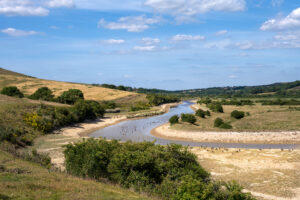If you are responsible for the facilities management of your business premises, you will also be responsible for its water. This involves a variety of responsibilities that cover health and safety, usage, and leak prevention.
Water hygiene and legionella
As the person in charge of your business premises, it is your legal responsibility to manage the risks from the legionella bacteria, and controlling these risks is especially important if your business involves working with people who are elderly or vulnerable. Legionella is a waterborne bacterium that, if inhaled through aerosol droplets of water, can go on to develop into the potentially fatal Legionnaires’ disease.
As set out in the Health and Safety Executive’s Approved Code of Practice, it is your responsibility, as the duty holder, to control the risks from legionella bacteria in your building’s water systems, and this must be done as part of your planned preventative maintenance. This involves appointing a ‘responsible person’ (or taking that responsibility for yourself) to undertake legionella risk assessments, implement and manage control measures, carry out regular monitoring and keep accurate records.
Legionella thrives in stagnant water that’s between 20oC and 45oC. Stagnant water collects the kind of contaminants that the bacteria thrive on, such as organic matter, scale, and rust. It is therefore vital not only to ensure the water temperature is either too cold or too hot for the bacteria, but also to ensure your water system is flushed regularly. In busy areas, flushing will happen more or less on a daily basis, but if there are areas of your premises that are used infrequently, you need to take steps to ensure water is run through the entire system at least once a week. This involves flushing toilets and running the taps for two minutes to prevent stagnation.
Saving water
Any measures you take to help your business save water will also save money on bills. Taking steps to save water is also essential for the environment, with serious water shortages being predicted even for the UK in the near future if no action is taken now.
The good news is that water-saving measures don’t need to cost a great deal and will provide you with a quick return on your investment. Measures could be as simple as fitting tap aerators which slow down the stream of water without reducing the pressure. This means you’ll be using less water and your staff won’t even notice a difference.
Grey water usage
Other water-saving measures include recycling water from sinks, washing machines and dishwashers to use to flush toilets, water the grounds or wash down pathways. When you use grey water, you don’t just save on the amount of clean water you use, you also save on the amount of wastewater you flush down the drain.
Finding leaks
Undiscovered leaks on your business premises can lead to the loss of huge amounts of water, and this could lead to the loss of thousands, sometimes hundreds of thousands, of pounds. The way to discover leaks could be as simple as keeping an eye on your water meters or taking meter readings outside of working hours.
By understanding the way your business uses water, you’ll be well placed to identify ways of making savings and efficiencies. To discover more ways of saving money on your water bill, download our free Water Efficiency Guide.



